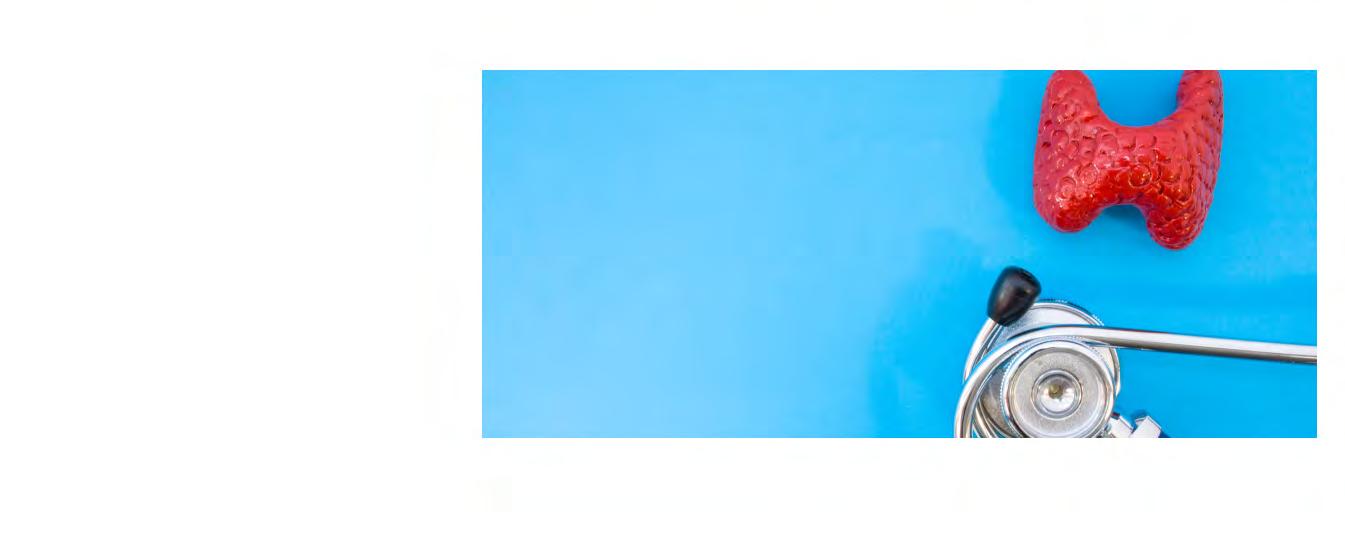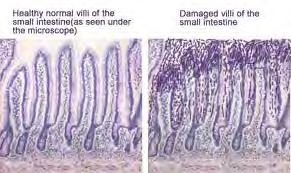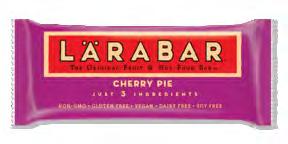THYROID TLC DIET and LIFESTYLE Guide





Hi, I’m Dr. Michelle Sands, an #1 International Best-Selling Author of Hormone Harmony over 35, licensed Naturopathic Physician (ND), and Doctor of Functional Medicine , highly sought-after Female Hormone and Menopause Expert. My book, clinic, and programs have been featured on NBC, ABC and CBS for their unprecedented success in transforming women’s lives. I am the founder of Glow Natural Wellness, a high-tech, data driven, precision virtual wellness clinic for ambitious, compassionate women looking to unlock their limitless potential.
I believe that nature provides us with everything we need to heal our bodies and live optimally. I also understand that in today’s modern world our bodies and minds are exposed to lots of un-natural things that take away from that optimal level of health.
GLOW stands for Genetic Leveraging for Optimal Wellness. My goal for all women is for them to love their bodies, enjoy their lives, and live their dreams.
I know all too well what it is like to suffer from thyroid disease. I suffered with Hypothyroidism and Hashimotos Thyroiditis for many years. I was prescribed medications that didn’t work, and my weight, moods and confidence suffered.
I created this guide to help you understand your thyroid health, what affects it, and how to give it the TLC it needs to heal with simple diet and lifestyle strategies. At the end of this guide, you will get an opportunity to dig deeper into your own thyroid and metabolic health, so be sure to read to the end!
To your health, Dr. Michelle


If you remember only one thing from this document, let it be this:

If you have a thyroid condition, it’s 90% likely to be an autoimmune disease, like Hashimoto’s.

This means that your own immune system is attacking the thyroid gland.
As with any autoimmune disease, the immune system turns against one’s own body parts –in the case of rheumatoid arthritis it’s the joints, with Celiac’s it’s the gut, with Type 1 diabetes it’s the pancreas, with multiple sclerosis it’s the nerves, with lupus it’s the joints and muscle tissue, and the list goes on.
In the case of thyroid autoimmune diseases, it’s called thyroiditis, which can refer to either Hashimoto’s, which is an autoimmune disease that slows the thyroid down (hypothyroidism), or Graves’ Disease, which causes an overactive thyroid (hyperthyroidism).
It’s well known now that those with one autoimmune condition are more likely to develop two or three more debilitating autoimmune conditions.
“People with Hashimoto thyroiditis have an increased risk of developing other autoimmune disorders, including vitiligo, rheumatoid arthritis, Addison disease, type 1 diabetes, multiple sclerosis, and pernicious anemia.”
It is, therefore, essential to restore the functioning of the immune system in order to manage the state of the immune system and, hence, your thyroid challenges. To restore the immune system one must restore the health of the gut.
It has been estimated that the gut wall contains about 80—85% of the immune system. The good bacteria in the gut engage the lymphoid tissue, an integral part of the immune system.
There are tons of lymphocytes and other immune cells in the gut, which protect the body from viruses, bacteria, and other invaders. If the bacteria in the gut are damaged or abnormal, there are far fewer lymphocytes, and the immune system becomes compromised.
This can lead to the person developing chronic viral infections, allergies, chronic colds, autoimmune disorders, and other similar complications.
Everyone has bacteria in their digestive tract that is essential to the function of the human body. A healthy adult has about 1.5 – 2 kg of bacteria in their gut, both good and bad.
The different types of bacteria live in harmony, with the good bacteria keeping a tight control on the bad. Normal levels of bacteria-also called micro flora- in the gut protect against invaders, undigested food, toxins, and parasites. It keeps the gut wall protected, takes an active part in the digestion and absorption of food, and is essential to the immune function.
It helps to transport vitamins, minerals, water, gases, and other nutrients through the gut wall and into the bloodstream. The bacteria also actively synthesize various nutrients.
When the good and bad bacteria in the gut get out of balance, it’s referred to as a dysbiosis, and a whole host of negative reactions can occur in the body.
Undigested foods can leak through into the bloodstream, causing food allergies and Intolerances. Vitamins and minerals may not be absorbed, leading to deficiencies and causing the bad bacteria to produce an excess of toxins, and the immune system to stop functioning properly.

Bloating, constipation, gas, diarrhea, acid reflux, pain, burping? They are never “normal”.

Do you often experience bloating, gas, constipation, acid reflux, burping or bouts of diarrhea?
It is so common for so many people that we have grown to believe that it’s normal to have frequent or chronic digestive issues. It’s very important to understand that it is not only not normal, but also detrimental to your immune system (remember, this is where the immune system starts) and therefore also your thyroid health.

If you look at the picture on the left you see healthy villi; these are hair-like projections located in the ileum, which is a part of the digestive tract. The villi are instrumental in digesting carbohydrates, proteins, and fats without causing irritation of the intestinal walls and therefore your thyroid health.
The villi are also responsible for the absorption of vitamins and minerals from the food we eat. The picture on the above is showing you a damaged form of villi, which is common in people with chronic digestive issues.
When we say “chronic”, it does not have to mean you must be in constant and debilitating pain; it just means you are frequently (a minimum of twice per week) challenged with any of these: constipation, diarrhea, gas, bloating, acid reflux, burping or intestinal pain.
The intestinal walls are often irritated in those with intestinal permeability, also known as “leaky gut.”
The term “leaky gut” is a non-medical, yet very real and descriptive way of saying that the lining of the intestines is damaged and undigested food particles “leak out” into the blood stream to wreak havoc in the body.
This chaos is largely created by the immune system launching an attack on one’s own body parts when there is food “leaking out.”
Some of the food particles, like gluten, are said to look very similar to the thyroid gland cells, and this is why so many people with thyroid conditions do well when they stop ingesting gluten.
A person suffering from an autoimmune disease invariably also suffers from often unacknowledged gut issues.
The more inflammation in the autoimmune system, the more severe the gut issues. In a vicious self-perpetuating cycle, a leaky gut causes flare–ups of autoimmune conditions, which in turn further damages the gut lining.
Diagnosing leaky gut is not easy and the list of symptoms can be very long. It includes conditions like constipation, intestinal pain, diarrhea, headaches, skin problems (acne, eczema), frequent colds, stubborn weight gain, UTIs, insomnia, and the list goes on.
Things that have a negative effect on gut flora:
•Antibiotics and other drugs
•Diet, especially sugar and processed food
•Diseases
•Stress
•Other: physical exertion, age, alcoholism, pollution, etc.
Diet is an important component of a person’s health. The food that one consumes effects the type and amount of bacteria in the gut, the functioning of the immune system, and vitamin and mineral levels, among other things.
Poor diets can lead to improper digestive system functioning, food allergies and intolerances, vitamin and mineral deficiencies, and toxins leaking into the bloodstream, therefore, into the brain and nervous system.
All of these things can lead to a plethora of different health problems ranging from autism and depression to thyroid dysfunction.

Making positive changes to the diet is the first step in cleansing the body. Only then can you begin to repair the gut lining, dispose of built-up toxins, restore immune system function, and see your health starting to shift.
That when symptoms such as weight gain, fatigue, anxiety, constipation, difficulty concentrating, diarrhea, and insomnia begin to disappear. Once the immune system is repaired, the thyroid is no longer under attack, and our body can heal.
If you have been diagnosed with an autoimmune condition like Hashimoto’s or Graves’ Disease, it’s very likely that a simple diet improvement might not be enough at this point.
Generic advice dispensed by mass media, such as “eat whole foods,” “choose unprocessed snacks,” and “buy local produce” is not enough.
It became clear to many integrated physicians who believe in diets and holistic nutritionists alike that a new, more stringent approach is sometimes necessary.
The diet must be very basic and simple so as not to trigger inflammation in the intestines and worsen leaky gut and autoimmune flare-ups.
Food allergy and food intolerance tests (which, unbeknownst to many, are two different tests) are infamously unreliable and can, therefore, not be depended upon when it comes to repairing serious digestive issues.
When you feel hungry and you feel jittery, shaky, moody, unfocused and just plain crappy, then this is bad news: your sugar levels drop too quickly and this is either an onset of hypoglycemia (called reactive hypoglycemia) or fullblown hypoglycemia.
You might have heard many people talk of feeling this way, but similar to common digestive issues, this is not normal.

Oh, and don’t rely solely on the lab results of your glucose (fasting blood sugar) or insulin HAC1 tests – they can be a great source of information, but always listen to the way your body is signaling hunger by 3pm.


resistance with a proper way of eating!
Why are your sugar levels so important?
In simple terms: you will never enjoy good health with a healthy thyroid if your sugar levels are not well-managed and contained.
This is what happens when we consume all types of sugars, refined carbohydrates and high-glycemic carbohydrates (like puffy rice cereals). To bring the sugar levels back to normal, the pancreas excretes insulin into the blood stream.
The pancreas, as you may or may not know , is also part of the endocrine system.
The endocrine system is a complex, intricate and sophisticated network of glands, all of which produce hormones designed to balance each other out; this means an imbalance of one will negatively impact the others.
So, back to the pancreas: when sugar spikes occur frequently from too much cereals, bagels, pastas, bread, candy, or power bars, the pancreas begins to overcompensate, releasing too much insulin into the blood stream.
Now the blood levels drop too low, and our adrenals (fight or flight hormones) step in to save the day. You see, the adrenals interpret low sugar levels as a “crisis mode” in the body and send out hormones to boost it.
When this happens chronically, the body systems that take a beating are the digestive tract, the immune system (remember also that sugar is an immunity suppressant), and the brain and lungs, as well as the adrenals, which are driven to exhaustion.
I hope now you can see how reaching for an afternoon sugar fix is digging a deeper hole into your thyroid crisis.
Many people think they eat well. You might be one of them. I was certainly one of them, too.
Here is something I would like to share with you that many of us don’t realize: simply read the product labels to really know how much sugar there is in the products you buy and count, and just for a few days, calculate the amount of sugar you consume.
Take a look at the meals of an average American and the amount of sugar they contain. 3.8 grams is equal to 1 teaspoon of sugar.





OK, so here is the total: 170 grams of sugar. That’s 45 teaspoons.
Yes, this is not a typo. 3.8 grams of sugar = 1 teaspoon.
OK, take out the sinful Starbuck’s Frappucino, and we are still at 26.5 teaspoons.
How much sugar is a good amount to consume per day? 4-5 teaspoons (or 20 grams) is optimal and this includes sugar found in whole foods, like fruit and root vegetables.
Mass producers of processed foods are generous with sugar, catering to our addiction to that substance, along with carbohydrates and grain-based diets.
As you can see from this example, it’s key to get an idea of how much sugar we consume daily and how we feel because of it.
To repeat: the best test for your sugar levels is how you feel right after eating or when you are getting hungry.
Feeling tired right after a meal could be a sign of insulin resistance, and feeling shaky, moody and unfocused could be a sign of hypoglycemia, or the onset of it.
Food cravings are one of my all-time favorite topics, as they are our body’s way of telling us that it needs something from us.
It’s like a voice from the inside that says, “I need your help to feel balanced,” or “I need something to feed an addiction or to fill a void.”
A chocolate craving, for example, is not a sugar craving; it’s most often a sign of a magnesium deficiency.
Craving meat should not be seen as a particularly bad craving – it often just means our body needs animal protein, iron and/or vitamin B, as it might be deficient of them.
So what about craving sugar and carbs like pasta and breads? About 60% of the people with whom I work struggle with this craving, so don’t beat yourself up if that’s you too. It’s not about being weak. It’s not about being greedy for sweets.
•Candida (yeast overgrowth in the gut, reproductive organs or skin)
•Low blood sugar
•Deficiency in chromium, sulfur, tryptophan or phosphorus
Keep reading to find out how to address your sugar addiction.

“Yes, but I’m already a healthy eater!”
The majority of my clients say this when we first speak. I fully understand where you are coming from – you have made the commitment to heal yourself.
The important questions are: “What is healthy?” and “What is right for you?” A couple of things I suggest considering:
Reason #1: Misconception of what is “good food”
For example, many people still see low-fat diets, cereals for breakfast, protein powders or fortified food as healthy.
There is sufficiently strong evidence today to show the detrimental impact they have on our health.
Reason #2: Food sensitivities you don’t know you have
You might have food sensitivities, which are different from allergies and often misdiagnosed by most doctors.
If, for example, you are sensitive to eggs, eating even organic eggs will still create havoc in your digestive and immune system and create Hashimoto’s flare up. You need to find and eliminate them (more on that later).
Reason #3: Imbalanced digestive microflora
Remember that your health starts in your gut. Food intolerances, pathogenic bacteria, yeast, parasites and internal and external toxic load create an inflamed immune system.
Reason #4: Heavy metal toxicity
Toxicity from heavy metals such as mercury and lead, PCBs, BPAs, chlorine, and fluoride all can trigger autoimmune diseases, and they are all ominously present in our modern lives. Do you know where to find them?
Reason #5: Marketing
Marketing claims and perceptions created by large food companies cause us to trust food that has little nutritional value or is often detrimental to our health by being highly processed and loaded with chemicals, sugar and sodium.
Just look at the innocent lemon tea from Snapple marketed as a healthy, everyday drink... with 36 grams of sugar, which equals 9.5 teaspoons, nearly ten times the recommended daily allowance.
We are NOT saying you should not take Synthroid or any other medication. You need it to function properly. Synthroid, Armour, Levoxyl, etc., provide a hormonal replacement therapy to give you the hormone (T4) you are not producing sufficiently.
What these hormone-replacing drugs are not addressing is the underlying reasons why you are having thyroid challenges in the first place.
If you have lost your thyroid to cancer or RAI (radio-active iodine), you will, of course, need to be on medications (or hormone-replacement therapy) for life.
However, optimizing your digestive health will benefit you all around, and your thyroid meds will be utilized far more effectively.
But, in parallel to a pill-popping morning ritual, start thinking critically and take action to re-build your overall health by re-building your digestive health first.
Consider this analogy: imagine your house having a leak in your roof and you continually repaint the walls inside the room under the leak every day so you don’t see the mold growing. Taking Synthroid every day is like re-painting this wall. Would you not rather fix the roof, since this is where the leak is? Or in other words, why would you not get to the root of the problem?
To explain Thyroid Diet, let me address three pillars. I developed these pillars while asking myself three fundamental questions:
Pillar 1: What can I REMOVE from my current diet and lifestyle that is sabotaging my immune system and my thyroid?
Pillar 2: What can I ADD to my life to boost the immune system, detox the body and help the thyroid?
Pillar 3: How can I find a BALANCE in what I’m doing so I don’t get overwhelmed and learn to enjoy my new life?
This means sugar cravings, hypoglycemia or insulin resistance, and normalizing these first is key in restoring thyroid health.
Without fixing your sugar issues, your thyroid will never improve. This is because the pancreas is responsible for sugar metabolism, and similar to the thyroid, the pancreas is also part of the endocrine system. As you can imagine, these glands are all intricately interconnected.
A few tips for you to manage sugar fluctuations:
•Start reading product labels to see how much sugar is in your food. 3.8g = 1 teaspoon. For example, a Caramel Frappuccino from Starbucks has 69g of sugar = 18 teaspoons. Activia’s yoghurt proclaimed as “healthy food” has 7 teaspoons. Try not to consume more than 5 teaspoons of sugar daily, especially if you are having a sugar problem.
•Start the day with a high-protein, high-fat breakfast. It will help you stabilize your sugar levels for the day; you won’t crash at 11am and won’t crave sugar and snacks during the day. Reduce processed carbohydrates; we are a carbs-obsessed and addicted nation, with carbs constituting 50-60% of our diet, much of which is coming from grains. Grains, especially in the form of flour contain starch that feeds the pathogenic bacteria in your gut and worsens the problem.
•For great breakfast ideas, head over to this section of my recipes. Breakfast will never be the same!
•Reduce processed carbohydrates. Again, this is sugar too, especially from chips, cereals, puffy grains and flour, even the gluten-free versions.
Have you seen “gluten-free,” “dairy-free,” etc., popping up at almost all grocery stores now? This is because many people are trying to rid their diets of the big five (gluten, dairy, corn, eggs and soy) in search of significant changes to their health. To learn how to do the Elimination Diet, review module 3 of The Glow Protocol. You may have to do more than one elimination diet at different seasons of your life as your microbiome and body chemistry changes.

You can also have a food intolerance IgG test done, which is different from an allergy test, but they still need to be taken with a grain of salt, as the results are not absolute.
Gluten is an infamous food if you have a thyroid condition, and eliminating it is pivotal in restoring healthy functions. However, you often need to cut out more than just gluten.
As mentioned above, most thyroid conditions are autoimmune diseases. There are multitudes of lymphocytes and other immune cells in the gut, which protect the body from viruses, bacteria, and other invaders.
This is why most people with thyroid conditions also experience frequent bloating, gas, constipation or diarrhea. A diet change will help your gut tremendously. “All diseases begin in the gut,” said Hippocrates, the father of Western medicine, and I’m not sure why this is not taught in medical school today.
Reduction and total elimination of food intolerances is the first and most important step in restoring the health of the gut.
Reduce toxicity from additives, preservatives, artificial sweeteners, excessive sodium, trans-fats, parasites, candida and pathogenic bacteria, as well as toxins hiding around your house.
Water toxicity is a HUGE factor in thyroid conditions; in the US, most municipalities add fluoride to the water supply, and that chemical is now linked to slowing down the thyroid. Fluoride is believed to be leaching on to the thyroid cells, inhibiting the uptake of iodine, hence the production of the thyroid hormone (T4). Pick a water filter that removes fluoride (many do not).
e)DETOX
It is crucial to detox your liver and your gut, as this is where the inactive T4 hormone gets converted to T3, the active hormone that powers us up. Most of our body cells need T3, not T4. If you are taking Synthroid, you are taking a synthetic version of T4 that still needs to be converted to T3.
If you have a sluggish liver and gut, you won’t convert properly. Try doing a yearly or bi-yearly fasting or juicing to give your body a break.
You can also implement the tools in the Detox Module of the Glow Protocol for a deeper detox and then use The 21 Day Metabolic Rehab as a seasonal maintainence protocol.
This is a hugely important topic, especially with women. You won’t be able to fix your thyroid without fixing the adrenals. The adrenals are also a part of the endocrine system and fire up when you are stressed.
The stress that exhausts the adrenals does not have to come from your emotional responses. Stress can also be brought upon by chronic digestive issues as well as hypoglycemia. Both were covered in earlier sections.
I recommend looking into adrenal fatigue symptoms to see if you are exhibiting signs of them. De-stress by working with a therapist or life coach, meditating, developing a regimen of physical activity, or practicing breathing.
Food that is nutritionally dense and provides all the key macro- and micronutrients in good ratios needs to be added in place of sugar-rich monstrosities. Some tips for adding to your diet:
•Always choose organic produce, as it is more nutrition-packed and free of hormones that are known to interrupt our endocrine system.
•Meat must be organic at the very least, but preferably pasture-raised and grass-fed. We want to eliminate antibiotics and growth hormones from our diet. Organ meats are significantly higher in nutrition than muscle meat, especially vitamin A, B12, B6, selenium and iron.
•Food that is FERMENTED the traditional way; sauerkraut, kimchi, kefir, homemade yoghurt (if you can tolerate dairy, or use non-dairy yoghurt from coconut or almond milk), and dill pickles are all rich in probiotics, which help balance the gut flora.
b)PROTEINS
These are the building blocks of both your digestive track and your hormones. We are fat-o-phobic in America, and low-fat diets are one of the worst things we’re invented. Europeans and Asians traditionally sustain fat-rich diets and still enjoy much better health than we do. Choose foods rich in good fats, such as avocados, walnuts, coconut oil, and coconut butter.
Animal fats are best for restoring a troubled digestive system; ghee (clarified butter), butter, chicken and beef fat are essential, but need to be rendered, not in fried or processed form, for maximum health benefits.
c)PROBIOTICS are key in restoring your digestive tract.
Everyone has bacteria in their digestive tract that is essential to the function of the human body.
A healthy adult has about 1.5 – 2 kg of bacteria in their gut, both good and bad. Normal levels of bacteria, or flora, in the gut protects against invaders, undigested food, toxins, and parasites.
When the good and bad bacteria in the gut get out of balance, a whole host of negative reactions can occur in the body.
Undigested foods can leak through into the bloodstream, causing food allergies and intolerances, along with vitamin and mineral non-absorption, leading to deficiencies, with the bad bacteria producing a whole heap of toxins, and the immune system functioning improperly.
Here are examples of traditionally fermented foods you could incorporate into your diet:
•Sauerkraut (choose properly fermented, not in vinegar)
•Kimchi (Korean fermented veggies)
•Kvass (potent liver tonic)
•Kefir (has different bacteria than yoghurt, also super beneficial)
•Vegetable medley (fermented)
•Coconut water kefir

d)HERBS, SUPPLEMENTS and VITAMINS
I’m a fan of getting these from REAL foods whenever possible, as too many people over-medicate with synthetic versions and feel worse later. These tips were given by my naturopath, who focuses on hormonal and thyroid health, and apply to most auto-immune conditions.
∙Most people are Vit D deficient. Taking Vit D in 2,000-5,000 units is safe and healthful, as Vit D is actually a hormone, connected to the thyroid.
Calcium is fundamental, but needs to be taken with magnesium, vitamin D and K2 for full absorption. Fat needs to be present for the vitamins to be absorbed.
∙ For hypothyroidism: selenium, turmeric/curcumin, and phytosterols, and for GI support: probiotics and L-Glutamine are vital.
∙For hyperthyroidism: copper and magnesium are a common deficiency.
e)SIMPLE MEDITATION, BREATHING and VISUALIZATION techniques that manage stress and emotions. I cannot emphasize enough how important this is, especially for people with hyperthyroidism.
We underestimate what stress and emotions do to us; each flare-up of anger, along with feelings of guilt, fear, hostility, or jealousy, fire up the adrenals, which then releases cortisol, and this hormone has a detrimental impact on the thyroid.
f)MOVEMENT PLAN
Whether it is sports, dancing or yoga, choose an activity that gets you moving without draining your adrenals and your thyroid, yet gives you a sense of accomplishment and joy. If you suffer from adrenal fatigue, do not overexercise.

No one diet or lifestyle plan works for everybody, as each person has a unique way of healing.
There is a saying: “One person’s food is another’s poison.” It’s always worth remembering that just because one diet worked for one person it does not mean it will work for you too.
One person could have healed their thyroid by just changing their water filters and eliminating fluoride, while another needs to implement five major diet and lifestyle changes to start feeling just a little better. Let’s respect our differences.
•Olive oil; unrefined, virgin, cold pressed
•Coconut oil; unrefined, organic
•Beef tallow from grass-fed cows
•Ghee (clarified butter)
•Lard from pastured animals
•Canola oil
•Safflower oil
•Sunflower oil
•Margarine
•Oil sprays
•Any refined oils, vegetable oils
•Always whole grains, limit flours
•Brown rice *
•Amarynth *
•Millet *
•Quinoa *
•As much organic as possible
•Cruciferous vegetables
•Seasonal food
•Local
•Fermented vegetables
•Any packaged grains for “quick cooking” like quick oats, quinoa flakes, etc.
•Gluten (wheat, spelt, kamut, rye, couscous)
•Soy, unless fermented*
•All GMO grains
•Non-organic
•Raw cruciferous, in excess
•Canned, tinned
•Use cans only as “emergency” or “camping” food.
Eden Foods is the only BPA-free brand.
•Bottled are better than canned (e.g. tomato paste)
*Only if tolerated. Some people have a problem with these foods. If you can eat them, keep them in your diet.
•Sea salt; from Utah, Himalayan salt, Celtic salt
•Make your own dressing in a larger batch and store in the fridge for a few weeks
•Raw or pasteurized milk*
•Homemade yoghurt*
•Make your own kefir
•Coconut nectar (my fav)
•Maple syrup
•Honey; raw, local, unheated
•Stevia
•Alaskan fish
•Pacific ocean fish
•Farmed mussels
•Farmed oysters
•Wild-caught pink shrimp from Oregon
•Wild-caught spot prawns from
British Columbia
•Farmed rainbow, mackerel and white
•Table salt, white salt, iodized salt
•Bottled dressings and sauces
•Homogenized milk
•Processed cheese (like Kraft)
•Flavored yoghurt
•Commercial yoghurt
•High fructose corn syrup
•White, processed sugar (read product labels, 3.8g sugar=1 teaspoon)
•Aspartame
•Saccharin (Sweet’N Low)
•Sucralose (Splenda)
•Agave syrup
•All farmed fish and seafood
•Atlantic ocean fish and seafood
•Anything from China and Asia
•Imported shrimp
•Tuna (except troll- / pollcaught)
•Download this fish pocket guide
*I generally do not recommend dairy as it’s highly inflammatory. If tolerated, have it as a treat, not staple food.
•Organic, from pasture-raised, grass-fed animals only
•Bone broths, homemade
•Organs meats like livers (much higher nutritional value)
•“Conventional” meat, from grain-fed, soy-fed animals
•Avoid these preservatives in food: benzoates, nitrites, sulphites, sorbates.
•Turmeric (anti-inflammatory)
•Ground flaxseed (estrogen balance)
•Oysters (zinc content)
•Brazil nuts (selenium)
•Livers (selenium, Vit Bs)
•Protein shakes and powders
•Excessive supplements

Dive Deeper to Heal your Metabolism and Thyroid: 21 Day Metabolic Rehab
For a limited time, Dr. Michelle is offering members of this community a deeply discounted deep dive into thyroid and metabolic health. In this three phase program, you will address the underlying causes of metabolic and thyroid dysfunction and also have the opportunity for a private consultation at the end of the program, so that you can keep building on your results after the program ends.
Typical results include : 8-12 pounds weight loss (if needed)
Improved digestions
Increased energy and libido
Clearer skin
Reduction in symptoms of bloating and braing fog
